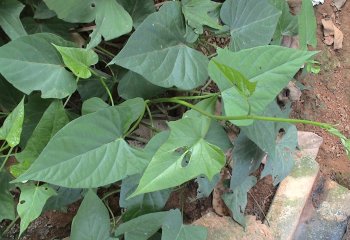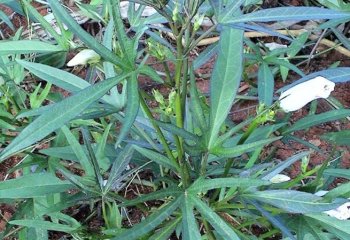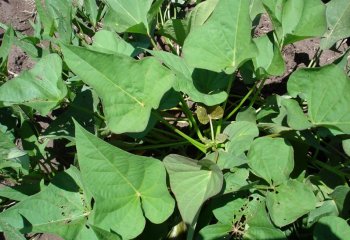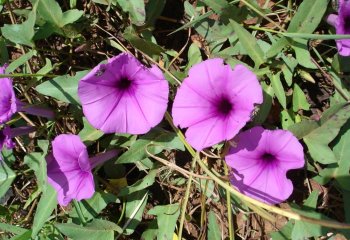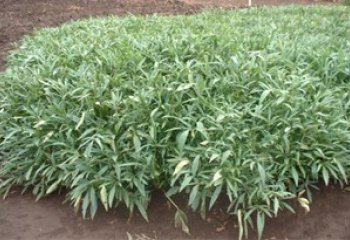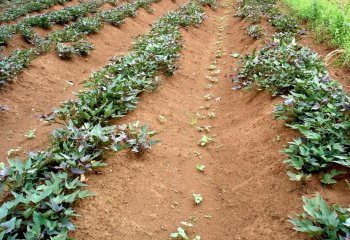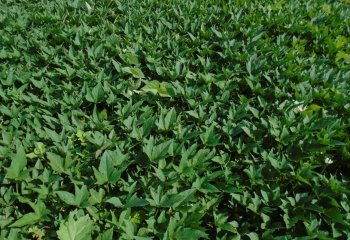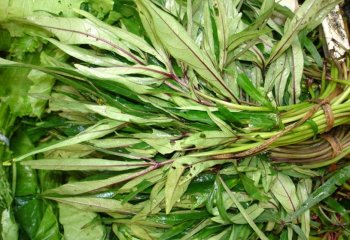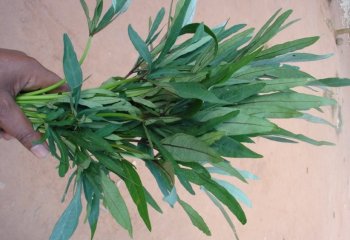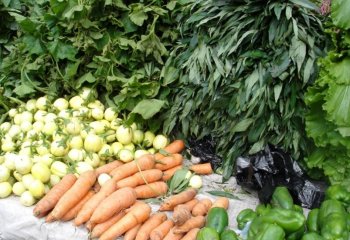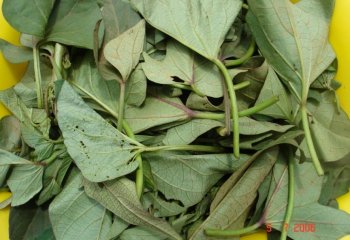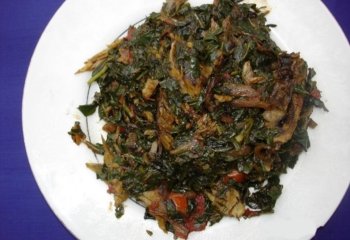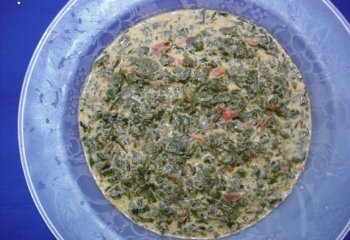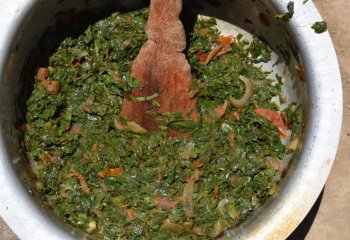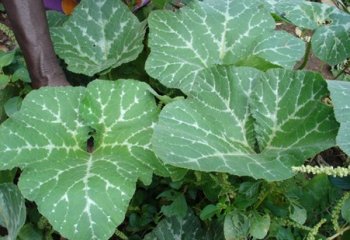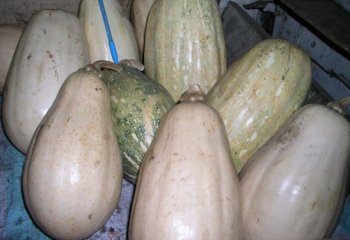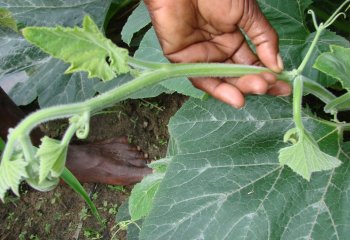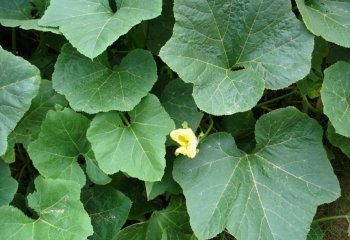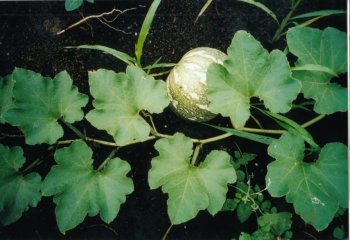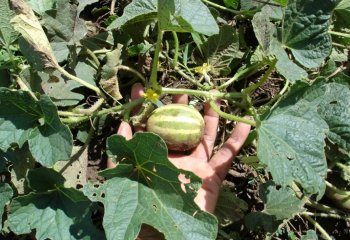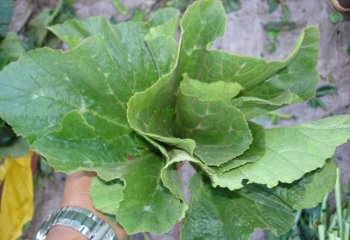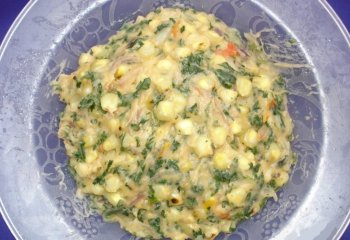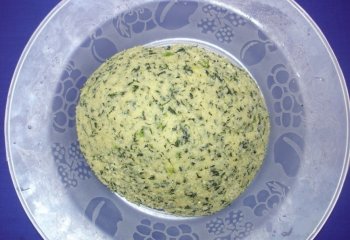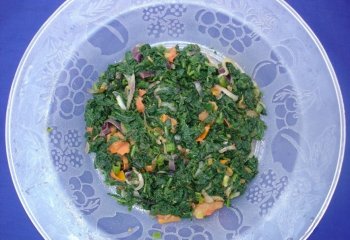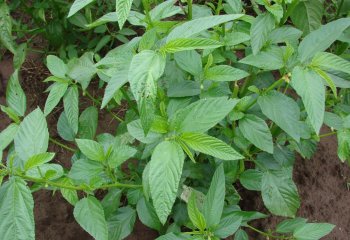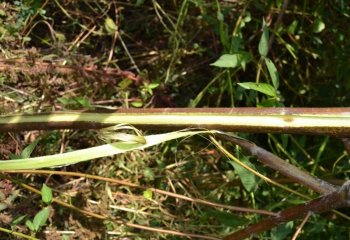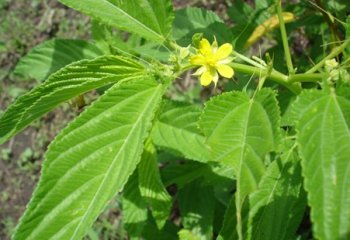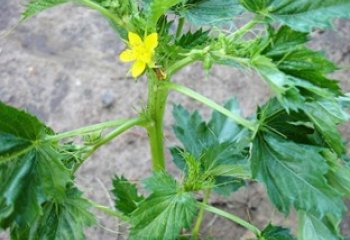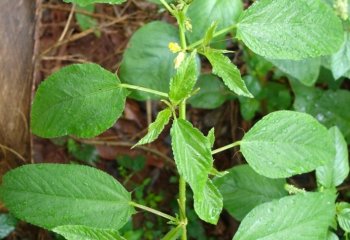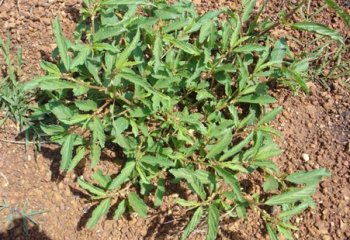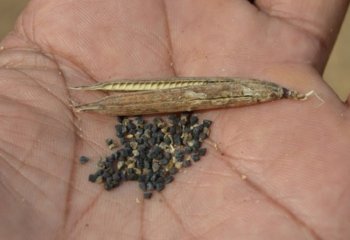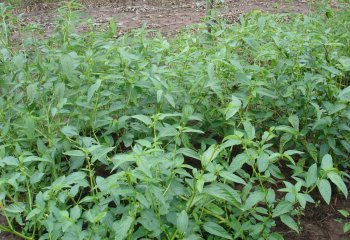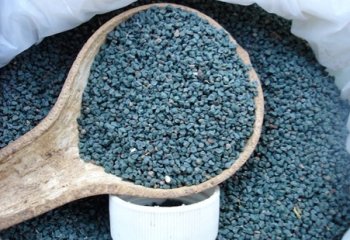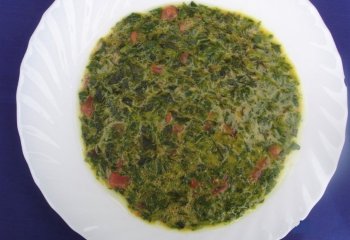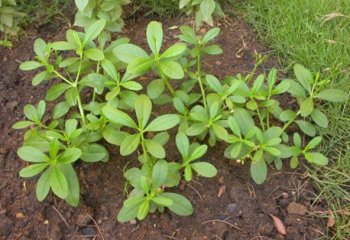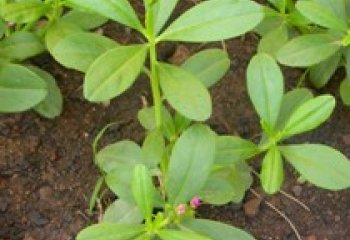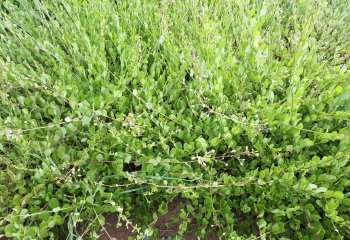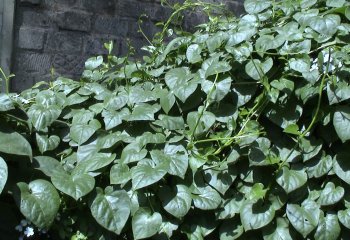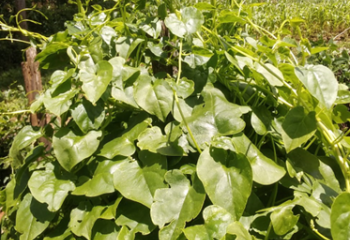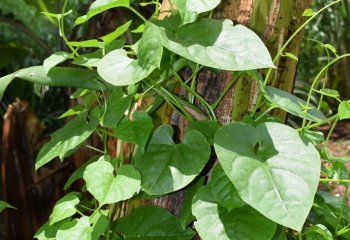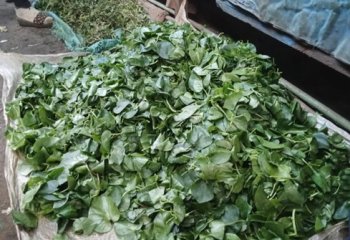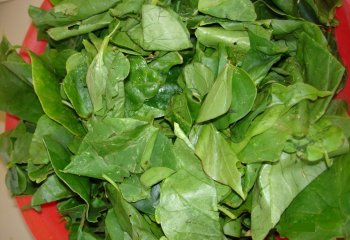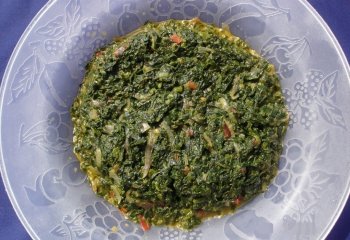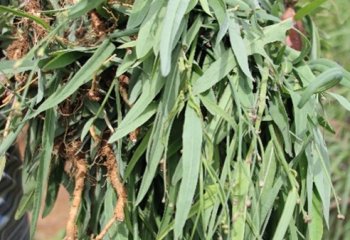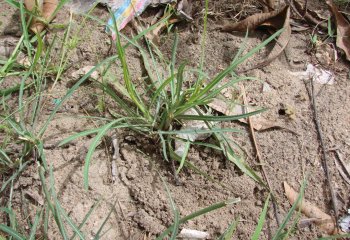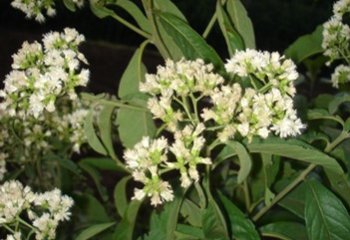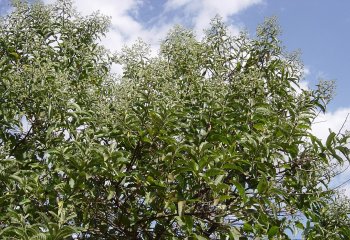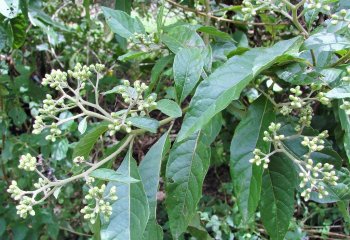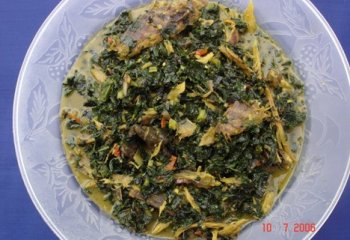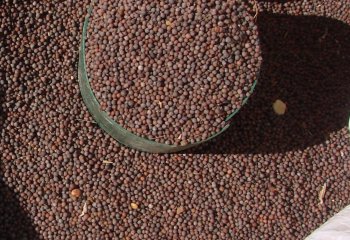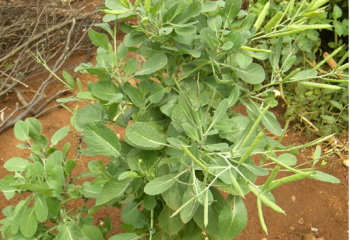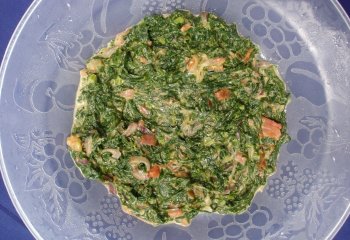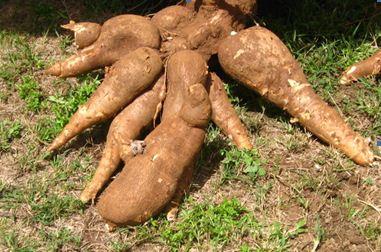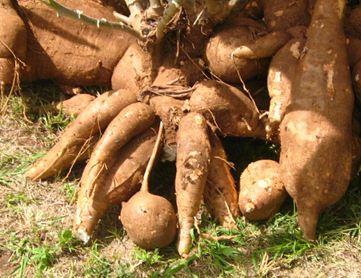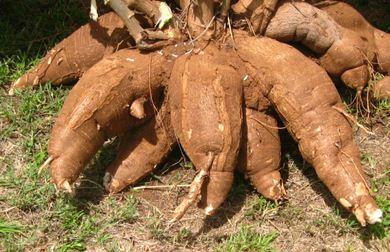Sweet potato leaves (New)
Main Content Block
Introduction.
Ipomoea batatas is the sweet potato belonging to the family Convolvulaceae. The genus Ipomoea comprises over 500 species of flowering plants and Ipomoea batatas is one of the most economically important species within the genus. The sweet potato is native to the area from South Mexico through Central America to north-west South America. It has now been introduced to most countries in the tropics and other warm parts of the world. The plant exhibits high genetic variation and there are many different cultivars available. Some notable varieties in Africa include the orange-fleshed sweet potato, white-fleshed sweet potato, and purple-fleshed sweet potato. Sweet potato is a hardy crop that can grow in a wide range of soil types and climatic conditions. It is well adapted to hot and humid environments, making it an ideal crop for tropical regions.
In Africa, sweet potato is primarily cultivated for its tubers, which are used as a staple food. Sweet potato leaves and young tender vines, however, are a popular vegetable in many African countries, particularly in East, Central, and West Africa. They can be prepared in various ways, including boiling, steaming, or stir-frying and served as a side dish. They can also be used in soups and stews or ground into a paste or powder. These versatile leaves are rich in nutrients such as vitamins A, B, and C, as well as minerals like iron, calcium, and potassium. In addition to their use as a vegetable for human consumption, sweet potato leaves and vines are also an excellent feed supplement for livestock due to their high protein content and richness in vitamins and minerals. The vines can also be used as green manure to enrich soil fertility. Furthermore, sweet potato leaves have been explored for their potential in biogas production.
General information
Ipomoea batatas is a perennial plant mainly grown as an annual crop. Stems are creeping slender vines that can grow up to 4 meters long. Leaves are green or purplish, heart-shaped and borne on long leaf stalks. Flowers are white or pale violet in colour. Roots are adventitious (arise from any point other than the main root). Tubers are produced in some of the roots and may vary in shape, colour and texture depending on the variety. The flesh of the tubers can be white, yellow, orange or purple, while their skin can be red, purple, brown, or white. Sweet potato is a highly variable crop with significant variation in morphological, physiological, and agronomic characteristics. (Heuzé et al, 2017). Some varieties are more preferred as vegetable. Green leaf types with narrow leaves are often more preferred.
© Maundu, 2016
© Maundu, 2006
© Maundu, 2006
© Maundu 2006
Related species.
Ipomoea aquatica commonly known as the water spinach is a prostrate or ascending plant with a much-branched structure that is commonly found in wetlands. Stems are hollow, fleshy, and have white sap. When floating in water, they have hairy roots arising from nodes. Leaves are triangular to heart-shaped and can grow up to 15 cm long with a pointed apex. Flowers are tubular and mauve, purple or pink. In Africa, this species grows widely from West Africa east to the Horn of Africa and south to Namibia. It grows in wetlands including lake shores, swampy places, seasonally flooded depressions, marshy river banks and rice fields. In these habitats it may grow on mud or shallow water. It is common along the Nile Valley. Water spinach is primarily used as a leafy vegetable as it does not have an edible tuber. It is used as a vegetable in Tanzania, coastal Kenya and in northern Uganda. It is a popular leaf vegetable in the South and South-East Asian cuisines where it goes by the name Kangkong. Additionally, the plant is a good fodder for most animals.
It is cultivated in South and South-East Asia. The plant can be propagated by rhizomes, stem runners, and possibly seeds. In Africa, it is mainly picked from the wild. The leaves of Ipomoea aquatica are rather slippery and are typically mixed with other leafy vegetables, such as cocoyam, pumpkin, Asystasia gangetica, okra, and cowpeas. During preparation, the leaf blade is usually separated from the leaf stalk and cooked for a few minutes.
(Maundu et al, 1999).
Ⓒ P Maundu, 2012
Ipomoea mombassana is a trailing plant that often climbs on grass and other plants. Stems are weak and hairy. Leaves are usually oval, heart-shaped and slightly hairy. Flowers are funnel-shaped, white with a purple centre in the corolla, occasionally mauve. This plant is widespread in Kenya and can also be found in Tanzania in grassland, disturbed bushland, and cultivated areas, mainly at elevations of 0-1,600 m. It is most commonly found at elevations of 0-1,300 m. It is a common weed in cultivation and can often be seen twining on other erect plants in cropland. It grows well in sandy or light clay soils.
The leaves of Ipomoea mombassana are used as a vegetable. The leaves may be cooked alone or mixed with other vegetables such as amaranth, Corchorus spp. and Oxygonum spp. Mixing the leaves with other vegetables lessens the slippery texture of the vegetable. Additionally, it is used as fodder during the rainy season. Ipomoea mombassana is a quite drought resistant and may be an important vegetable towards the end of the cropping season when most vegetables have dried.
(Maundu et al, 1999).
© Maundu, 2022
© Maundu, 2022
© Maundu, 2022
Agronomic aspects
Ecological information
Sweet potatoes thrive in well-drained soils that are moist but not waterlogged. Waterlogging can cause root rot. Temperature: Sweet potatoes are warm-season crops and require warm temperatures for optimum growth. The ideal temperature range for sweet potato cultivation is between 24-29°C. Soil: Sweet potatoes grow well in well-drained, sandy loam soils with good organic matter content. The soil pH range should be between 5.5-6.5. Acidic soils with a pH below 5.0 can lead to reduced growth and yield, while alkaline soils with a pH above 7.5 can lead to iron and manganese deficiencies.
Seed sources.
Sweet potatoes are mostly propagated through vegetative propagation using vine cuttings or tuber sprouts
Use of stem cuttings:
Farmers obtain cuttings from an established crop before or just after the harvest of storage roots. The cuttings are either used to establish a maintenance field, or directly for planting the next sweet potato crop. Below are some factors to consider when using stem cuttings:
• Care should be taken to select 'clean' planting material. This means choosing cuttings that are free of insects, soil, and any symptoms of viruses or fungal diseases.
• Generally, the apical (tip) portion of the vine is better than the middle or basal portions. This portion is less likely to carry sweet potato weevils and fungal pathogens, and has been found to establish faster than other portions.
• Length of cutting is less important than the number of nodes. Typical size is 20-40 cm, with 5-8 nodes. The conditions of the field may influence the relationship between cutting length and crop development. Farmers should experiment to decide what length is best under their conditions.
• Usually one-third to two-thirds of the cutting is buried. A minimum of 2-3 nodes, but up to about 8 nodes, is placed under the soil.
• The delay between cutting and planting may affect yield depending on the storage conditions for the cuttings. Storing cuttings for one to two days in humid conditions may be beneficial, promoting rooting at the nodes. Longer storage may adversely affect establishment by exhaustion of the cuttings' energy reserves. To minimise losses, leaves should be stripped from the lower portion of the cutting, and bundles of cuttings wrapped in a wet cloth or sack and kept in a cool, shady place away from wind. If roots develop during storage, they should be planted carefully to minimise damage to the roots.
• If planting material is to be maintained in a multiplication plot before planting of the next crop, it is recommended that plant cuttings be planted at approximately 15 x 20 cm spacing. New growth may be ready for cutting after 45 days.
Use of storage roots:
Storage roots are used when there are insufficient stem cuttings available, or when the level of pest and disease infestation is high so that few healthy vines are left. They may also be used in highly mechanized production, as the sprouts can be harvested mechanically from the seedbed. Healthy storage roots should be selected from plants that produced high yield. The roots are planted densely in a seedbed located away from other sweet potato crops. Roots are covered with about 3 cm of soil, and the bed covered with straw to help retain moisture. When the sprouts have grown long enough, they are cut near their base and planted directly in the field. To maximise the number of cuttings, remove the tips of the sprouts when they are about 20 cm long to promote branching.
Rapid seed multiplication:
When large amounts of cuttings are needed, rapid multiplication may be done. Although the merit of this practice has not been fully acknowledged by sweet potato growers, it can be the easiest way to produce large amount of planting materials. This method involves the following steps:
• Cuttings of about 30 cm are taken from either established plants or sprouted storage roots. These are then cut into single node cuttings, with the leaf attached. The tip of the vine is discarded.
• A seedbed is prepared with a mixture of loose, humus-rich soil and ash. The single-node cuttings are planted at a high density, with the stem section buried and the leaf upright.
• The seedbed is regularly watered and is prevented from drying especially during the first week of establishment.
• After about 2 weeks, when the seedlings have developed enough roots, they should be transplanted into the field. They should be removed from the seedbed with care to avoid damaging the roots. Transplanting should be done in the late afternoon to avoid excessive evaporation and wilting.
Husbandry
Weed infestation during the first 2 months of growth poses a problem in stand development, and requires adequate control to ensure high yield. Thereafter, vigorous growth of the vines covers the ground effectively and smothers weeds. In the tropics, manual weeding is generally practised.
Sweet potato responds well to fertilization, particularly if the land has been continuously cropped. However, fertilizer is seldom applied in the tropics. Manure or good compost should be incorporated to improve soil fertility. This is a common practice in smallholdings and traditional agriculture. Sweet potato is used in a wide variety of cropping systems around the world. Rotating sweet potato with other crops such as rice, legumes and maize is desirable to control diseases, pests and weeds. Intercropping sweet potato with other crops is very common in Africa.
(Ireta, L. M, 2013).
Vines may be planted on heaped soil or on ridges in a furrow system or just well-ploughed level field.
© Maundu, 2006.
© Maundu, 2005
Ⓒ Y. Morimoto, 2014
Harvest, post-harvest practices and markets
Sweet potato leaves are an excellent source of nutrients, and they can be harvested sustainably without harming the growth of the plant. It is recommended to harvest the leaves 45-90 days after planting and 1-2 times per month until the roots are ready for harvest. It is important not to harvest the leaves too frequently, as this can reduce root growth and result in less nutritious leaves.
When harvesting sweet potato leaves, it is best to use scissors or snips to cut off lengths of the vine, once the stems are at least a foot long. This will allow the plant to continue growing and producing new leaves. If you are growing sweet potatoes mainly for their leaves, it is important to plant them at a distance from each other so that they have enough space to grow and produce healthy leaves.
© Maundu 2006
© Maundu, 2006
© Maundu, 2006
Nutritional value and recipes
Sweet potato leaves are a highly nutritious vegetable. They are an excellent source of minerals such as iron, calcium, and potassium. Iron is essential for the production of red blood cells, while calcium is necessary for healthy bones and teeth. Potassium helps regulate blood pressure and maintain proper fluid balance in the body. Sweet potato leaves are also rich in vitamins such as vitamin B and beta-carotene. These nutrients can vary depending on the variety and harvesting period. While sweet potato leaves contain oxalic acid, the levels are significantly lower than those found in spinach making them a safe and healthy option for consumption.
Sweet potato leaves are an excellent source of antioxidant polyphenols, including anthocyanins and phenolic acids. These compounds help protect the body from damage caused by free radicals and are superior to those found in many other commercial vegetables. Sweet potato leaves may improve digestion due to their high fiber content. They also contain compounds that promote the growth of beneficial gut bacteria, which can further improve digestive health.
(Islam, S, 2014, Islam,S, 2006).
© Maundu, 2006
Table 1: Approximate Nutritional composition for 100 grams of sweet potato leaves
Proximate composition and dietary energy |
Sweet potato leaves. Fresh, raw |
Sweet potato leaves. Fresh, boiled* (as part of a recipe) |
Sweet potato leaves. Fresh, boiled* (without salt), drained |
Recommended daily allowance (approx.) for adults |
Energy (kj) |
211 |
225 |
220 |
9623 |
Energy (kcal)) |
50 |
54 |
53 |
2300 |
Water (g) |
83 |
81.9 |
82.3 |
2000-3000c |
Protein (g) |
4.6 |
4.9 |
4.8 |
50 |
Fat (g) |
0.2 |
0.2 |
0.2 |
<30(male), <20 (female)b |
Carbohydrate (g) |
4.9 |
5.2 |
5.1 |
225 -325g |
Fiber. Total dietary (g) |
5.3 |
5.6 |
5.5 |
30d |
Ash (g) |
2 |
2.1 |
2.1 |
|
Mineral composition |
|
|
|
|
Calcium (mg) |
78 |
83 |
77 |
800 |
Iron (mg) |
3.6 |
3.8 |
2.8 |
14 |
Magnesium (mg) |
70 |
74 |
44 |
300 |
Phosphorus (mg) |
84 |
89 |
79 |
800 |
Potassium (mg) |
569 |
605 |
296 |
4,700f |
Sodium (mg) |
6 |
6 |
5 |
<2300e |
Zinc (mg) |
0.29 |
0.31 |
0.23 |
15 |
Copper (mg) |
0.04 |
0.04 |
0.04 |
0.9 |
Bioactive compound composition |
|
|
|
|
Vit A RE (mcg) |
285 |
273 |
267 |
800 |
Vit A RAE (mcg) |
142 |
136 |
134 |
800 |
Retinol (mcg) |
0 |
0 |
0 |
|
Beta-carotene equiv (mcg) |
1,710 |
1,640 |
1,600 |
600 – 1500g |
Vit D (mcg) |
0 |
0 |
0 |
600b |
Vit E (mg) |
0.96 |
1 |
1 |
9 |
Thiamine (mg) |
0.1 |
0.1 |
0.07 |
1.4 |
Riboflavin (mg) |
0.28 |
0.28 |
0.19 |
1.6 |
Niacin (mg) |
0.9 |
0.9 |
0.6 |
18 |
Vit B6 (mg) |
0.19 |
0.18 |
0.13 |
1.3 |
Folate (mcg) |
80 |
60 |
42 |
400f |
VIT B12 (mcg) |
0 |
0 |
0 |
3 |
VIT C (mg) |
11 |
7 |
5 |
60 |
Complimentary recipes
Sweet potato leaves are a versatile ingredient that can be consumed in both raw and cooked forms. The leaves can be enjoyed raw in salads or smoothies or cooked as a substitute for other vegetables like spinach or turnip greens. To prepare, blanch in hot water or sauté with garlic and oil, cook in coconut milk, and serve with rice or pasta. Sweet potato leaves pair well with savory flavors enhancers like aromatics, meats, peppers, broccoli, mushrooms, and water chestnuts.
1. Sweet potato leaves
Congo recipe.
Source ; Biodiversity cookbook for Traditional vegetables
Ingredients
• 100 g sweet potato leaves
• Salt to taste
• 2 tablespoonful of palm oil
• 100 g tomatoes
• 50 g onions
• 1 cup water
• 50 g (medium size) smoked fish/beef or dried salted fish
Preparation
• Peel out the skin of the main petiole and wash the leaves
• Chop the leaves into small pieces
• Heat palm oil in a frying pan till it changes color to cream
• Fry the chopped onions till they begin to turn golden brown
• Add the chopped tomatoes and cook them till they are tender
• Add the vegetables and stir-fry them for 5 minutes
• Add the smoked fish or beef (optional)
• Add salt to taste, stir then add water
• Let this cook for 15 minutes then serve with fufu or rice
Remarks
Varieties with small tubers are more popular for they produce a lot of leaves
Sweet potato leaves are soft and slightly slimy when cooked and have a mild taste.
2. Matembele (Tanzania recipe).
Source; Biodiversity Cookbook for Traditional vegetables
Ingredients
• 130 g sweet potato leaves
• 70 g tomatoes
• 50 g onion
• 1 lemon
• ¼ cup groundnut or sesame flour
• 2 tablespoonful cooking oil
• ¼ cup coconut milk
• Salt to taste
Preparation
• Sort and remove the thread on sweet potato stalks and then wash
• Drain and cut if possible, into small pieces
• Squeeze the lemon juice and sprinkle on it to avoid sliminess during cooking
• Wash, peel and chop the tomatoes and onions
• Fry the onions lightly, add tomatoes, salt and stir till soft
• Add the sweet potato leaves, stir well and cover for 5-10 minutes. Simmer
• Mix thoroughly the coconut milk and the groundnut flour, then add into the vegetables while stirring for 5 minutes
• Season to taste and serve while hot as a relish
Variation
Use milk or cream instead of coconut milk
Use peanut butter instead of groundnut flour
Remark
The food is very tasty when coconut milk is used. When lemon juice is added it acquires a loose slimy nature.
3. Wimbia (Ipomoea mombassana)
Vegetable meal prepared among the Kamba community in Kitui, east Kenya.
© Muia J, 2021
Ingredients
• 100 g Wimbia leaves (Ipomoea mombassana)
• Salt to taste
• 2 tablespoonsful of oil
• 100 g tomatoes
• 50 g onions
• 1 cup water
Preparation
• Peel out the skin of the main petiole and wash the leaves
• Chop the leaves into small pieces
• Heat cooking oil in a frying pan till it changes color to cream
• Fry the chopped onions till they begin to turn golden brown
• Add the chopped tomatoes and cook them till they are tender
• Add the vegetables and stir-fry them for 5 minutes
• Add the smoked fish or beef (optional)
• Add salt to taste, stir then add water
• Let this cook for 15 minutes then serve with Ugali, rice or chapati
Servings/
Can serve 6 people
Remarks
Ipomoea mombassana leaves are soft and slightly slimy when cooked and have a mild taste

